
FUI-Bloggen
FUI är förkortningen för forskning, utveckling och innovation. I FUI-bloggen skriver Yrkeshögskolan Novias personal om sitt jobb, forskning, projektverksamhet och andra betraktelser.
Blogginlägg som är granskat av Novias redaktionsråd är utmärkta med nyckelordet "Granskat inlägg".
Vi följer CC-BY 4.0 om inget annat nämns.
FAO's stepwise approach to monitoring the sustainable bioeconomy
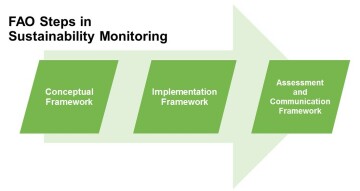
The EU Bioeconomy Strategy seeks a transition towards circularity and sustainability. This necessitates governing the bioeconomy’s sustainability for which the Sustainable Development Goals (SDGs) serve as a normative agenda. The challenge is to employ sustainability governance of the bioeconomy to safeguard against negative consequences while promoting positive potentials. Measuring sustainability can help with monitoring and evaluating progress, fostering broad participation by stakeholders, assessing sustainability tradeoffs, meeting or anticipating new requirements, identifying impediments, recognising excellence, and communicating results. The Food and Agriculture Organization of the United Nations (FAO) guidelines for monitoring the bioeconomy sustainability impact can provide a common ground for this endeavour.
EU Sustainable Bioeconomy Agenda
The EU Bioeconomy Strategy [1] seeks to create a circular, sustainable bioeconomy for Europe by reinforcing the link between the economy, society, and the environment. It addresses global concerns such as fulfilling the United Nations’ Sustainable Development Goals (SDGs) [2] and the Paris Agreement’s climate targets [3]. The EU is also working on establishing a circular economy by 2050 [4], developing a sustainable food system and the conservation of biodiversity. Circular and resource-efficient bioeconomy can be a key tool for making the EU more sustainable and resilient in the post-COVID-19 era.
Despite its transformational potential, the bioeconomy implementation is fraught with uncertainty and risk. Sustainable bioeconomy, encapsulated as a concept, encourages us to re-arrange and reconsider how our economies operate while also recognizing the need to innovate intending to function within ecological limitations. It is important to monitor the availability and impact of affordable, and secure biomass from EU resources in the long run to meet demands for existing as well as emerging needs. To monitor the bioeconomy sustainability, interactions with renewable and non-renewable systems as well as bioeconomic contributions to ecosystems are vital, taking into account dynamic interlinkages and substitution effects.
Governing the shift to sustainable economic growth requires a complete understanding of the broad-ranging and complex impacts of bioeconomy segments on the environment, and society at large. Thus, there is an urgent need to set up monitoring frameworks to evaluate the impacts of the multi-faceted bioeconomy.
Policy Scenarios for the European Bioeconomy to 2030 and 2050
EU Bioeconomy Strategy aims to develop a sustainable bioeconomy for Europe [5]. Different scenarios can be distinguished in a transition towards sustainable bioeconomy. The bioMonitor project, a Union’s Horizon 2020 research and Innovation programme, identified four major likely bioeconomy impact assessment scenarios (Figure 1): Drill baby drill’, ‘Go-it-alone’, Hand-in-hand’, and ‘BioEco-Resilience’[6].
In the ‘Drill baby drill’ scenario, the world continues to rely on a fossil-centric global order (known as the linear ‘take-make-dispose’ model), with all sorts of policy support mechanisms for the bioeconomy abandoned in favour of expanding reliance on traditional carbon-based resources for energy and material requirements. The ‘Go-it-alone’ scenario refers to the European commitment to a sustainable bioeconomy without global commitments. The EU is pursuing its Green Deal ambition for 2030 and 2050. Within this framework, the sustainable bioeconomy is projected to enhance resource efficiency by transitioning to a clean, circular economy, as well as to preserve biodiversity and reduce pollution, without relying on international cooperation. The ‘Hand-in-hand’ scenario refers to a global commitment in which the EU and other important players in the global arena collaborate to advance the bioeconomy. In this scenario, different types of policy mechanisms (e.g., reduction/elimination of tariffs trade for bio-based products) will be required to promote a more sustainable bio-based economy at a global scale and in the pursuit of domestic policies. In the ‘BioEco-Resilience’ model all key players (nations) are pursuing to achieve the ‘two degrees’ target stipulated in the Paris Agreement through chief transformations of the energy markets and reforms in the related climate policies. In this model, the economic transition towards a climate-neutral economy is closely linked to the bioeconomy and is in line with the Paris Agreement objective to pursue efforts to keep the global temperature increase well below 2°C [6].
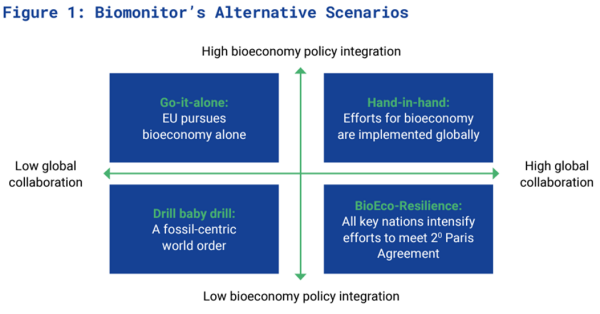
Figure 1. Alternative bioeconomy impact assessment scenarios (Reprinted from Panoutsou et al. [6].
A Transition to a Sustainable Bioeconomy
Population expansion, along with growing consumption of natural resources and, as a result, rising stresses on the biosphere, plus climate change, are pushing the natural resources to their biophysical limitations. Bioeconomy offers immense potential to rebalance the economy in relation to the biosphere. A sustainable bioeconomy promotes reducing constraints of fossil sources in support of renewable biomass, lowering emissions across the whole supply chain, and offering new opportunities for industries.
A sustainable bioeconomy also fosters an overall decrease in consumption through its key premises of resource efficiency such as cascading use of biological resources, waste prevention and waste recycling (see Figure 2). Circularity principles are frequently used to assist ensure the long-term viability of bioeconomy initiatives. It is, however, difficult to apply circularity concepts to the utilization of leftovers. The challenges stem from the potential conflicting applications of these leftovers, as well as the costs, logistics, quality and safety concerns [7]. Overcoming these challenges requires a comprehensive understanding of the sustainable impact of circular bioeconomy. To establish sustainable supply, not only wastes and biomass residues are important, but obtaining feedstocks from sustainable agricultural sources [1].
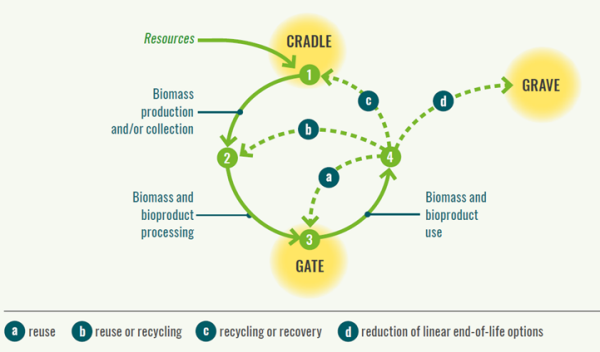
Figure 2.Circular end-of-life options in the bioeconomy (Reprinted from Gomez Gomez San Juan, Bogdanski and Dubois [7], P. xii).
There is increased urgency on all value chain actors to strive for more sustainable approaches in producing and consuming, particularly by embracing the potential of a more bio-based economy. Yet, an economic model based on utilizing biological resources does not necessarily ensure shifting toward sustainability, unless it is supported by enabling good policies, practices and technologies underpinned by the socio-economic and environmental implications. Furthermore, since trade-offs exist between different sustainability objectives, it is critical to realize the consequences of selecting one alternative over another. Without effective monitoring and evaluation, it will be challenging to assess these implications, which underlines the significance of well-defined criteria to ensure sustainability embedded in the development of the bioeconomy.
Building on current experiences of national and macro-regional bioeconomy monitoring systems, the Food and Agriculture Organization of the United Nations (FAO) and the European Commission’s Joint Research Centre (JRC) jointly developed general guidelines to establish a framework to monitor sustainability [8]. The framework outlines ten steps to help policymakers and practitioners to evaluate the bioeconomy sustainability in their respective regions.
The FAO Sustainability Guidance Notes
Monitoring systems enable decision-makers to analyze performance and progress toward specified strategic goals that represent an overarching vision. A full-scale bioeconomy monitoring system aids in assessing the performance and advancement of the bioeconomy in a particular region or sector. This enables transparent assessment of the consequences of sustainable use and production of food, feed, bioproducts, and bioenergy [9]. Moreover, an internationally coherent sustainability monitoring system helps to define a commonly agreed normative definition of sustainable bioeconomy principles. This also enables the management of possible synergies and trade-offs consistent with the Sustainable Development Goals (SDGs), 2030 Agenda, and other multilateral treaties, including the Paris Agreement on Climate Change [8]. Furthermore, common monitoring approach would encourage mutual learning across regions on innovative solutions to socio-economic and environmental concerns. It also facilitates the sharing of effective procedures and policies [10].
The FAO’s guidance note outlines a number of prevailing steps to establishing an effective and resilient system for monitoring a sustainable bioeconomy. These steps can be broadly clustered into three stages that determine three types of frameworks [8].
-
a conceptual framework, where all the components of the monitoring system are defined;
-
an implementation framework, where indicators are loaded into the conceptual framework and data collecting procedures are chosen; and
-
an assessment and communication framework, where the trends are evaluated and communicated.
The associated steps to establish these frameworks are summarized in Figure 3 and further elaborated below.
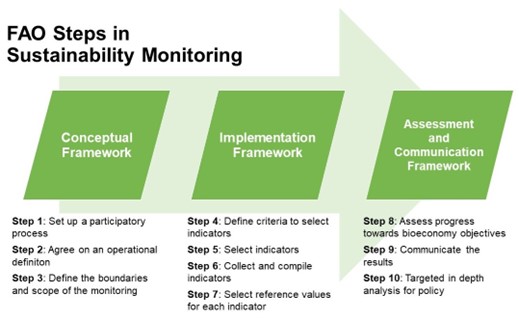
Figure 3. 10 steps for a bioeconomy monitoring system [8].
Conceptual Stage
A conceptual framework is essential to the success of the monitoring efforts. It lays the foundation for the effective collection, organization, interpretation, and communication of complex information. A conceptual framework will create a transparent vision of a sustainable and circular bioeconomy that can be readily shared, considered, and interpreted among diverse stakeholders. The aim is to minimize gaps in the monitoring system (by defining ‘sustainable’ and ‘circular’ bioeconomy) and ensure that a holistic picture of the bioeconomy with various possible direct and indirect impacts is adequately identified and managed.
Three major steps are suggested to identify and reduce gaps in monitoring systems. The first step is to adopt a participatory approach with a representative group of dedicated stakeholders. The second is to establish a relevant number of principles and criteria to make sure the indicators cover all aspects of sustainability. The majority of direct and indirect consequences are volatile, and trade-offs are inevitable. The third step is to specify the scope of the monitoring task.
The goal of the monitoring system is to track the progress toward particular objectives outlined in the strategy documents. The International Sustainable Bioeconomy Working Group (ISBWG) in 2016 defined ten Aspirational Principles and 24 Criteria representing the cornerstones of a sustainable bioeconomy [11]. Figure 4 summarizes these ten Aspirational Principles and associated SDGs. The aspirational Principles and Criteria (P&Cs) can be defined both at the territorial (i.e., regions, nations) and product (i.e., product, sector, and value chain) level. At the territorial level, the designated indicators (and related measures) can be modified to the bioeconomy priorities of the target region. They may be previously compiled by the regions (for example, to report on SDG indicators) and should be presented in a way that all stakeholders can understand [12]. At the product/value-chain level, the indicators can be defined for each bioproduct drawn on the pertinent value chain. These indicators’ measures may already be accessible, for example, if the bioproduct is certified or labelled [12].
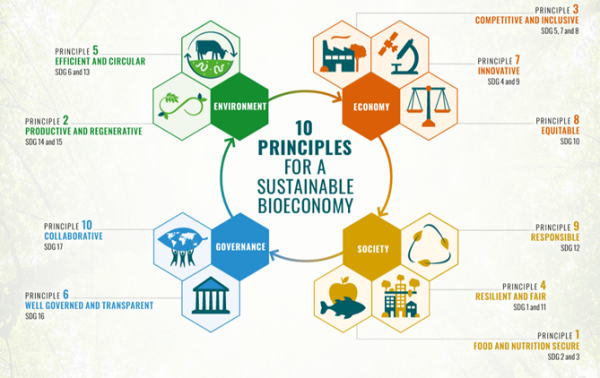
Figure 4. Ten Aspirational Principles for a sustainable and circular bioeconomy (Reprinted from FAO. [11]).
Implementation Stage
An implementation framework will provide selection criteria for indicators, ensure that the selected set of indicators is balanced through the sustainability dimensions, and allows a clear definition of reference values.
The initial step (step 4) in the development of the implementation framework is to define the parameters that will be utilized to rank and select available indicators. Literature on the sustainability assessment suggests different criteria for selecting indicators. For instance, Eurostat has suggested a scorecard for the selection of indicators within the SDG framework, focusing primarily on parameters such as availability, dissemination frequency, timeliness and geographical span [13]. FAO also has established the associations between the Sustainable Bioeconomy P&Cs and the SDG Indicators [14]. The indicators can be ranked and selected based on the parameters such as being meaningful, established (already in use), timeliness (based on recent publication), frequency (based on regular data collection), and accessible (data should be freely accessible).
The next step (step 5) eventually should lead to the assortment of a balanced set of indicators covering all aspects of a sustainable bioeconomy. Consider what needs to be measured first, then use an indicator that has already existed for this otherwise an indirect proxy must be sought. Both qualitative and quantitative indicators are needed. Robert, et al. [15] present an information pyramid with different categories of indicators (see Figure 5). The information pyramid reflects the degree of details of scientific data and scale of analysis in relation to the intended audience and the various reporting aims. At the foundation of the pyramid are the fundamental measurable statistical data followed by three layers of indicators varying in complexity, and therefore vulnerable to greater interpretation. In certain circumstances, fundamental indicators are useful, but in others, processed or system-level indications are appropriate.
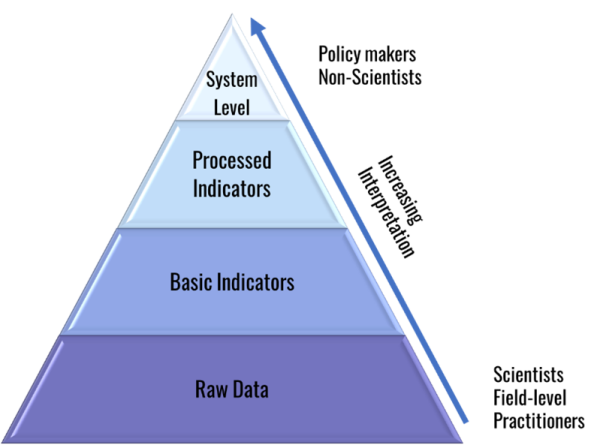
Figure 5. Aggregated indicators and the pyramid of information [15].
Next (step 6) the selected indicators should be compiled and quantified. To quantify the indicators, the most immediate opportunity is to utilize already existing and internationally recognized indicators to reduce the reporting burden. In the absence of suitable indicators, choose a proxy (aspirational indicators) and strive for filling the gap. When data gaps exist at the territorial level, data may be consolidated at the product level to provide aggregated, synthetic information, or vice versa (i.e., data from the territorial level can be disaggregated if the product level data is lacking).
In step 7, targets, and consequently the measurement of impact, can be defined either in relative or absolute terms. The directionality of the indicators (concerning the reference value) should be assessed against the P&Cs within the context of the conceptual framework.
Assessment and Communication Stage
Once the conceptual framework is populated with meaningful, well-established, high-quality indicators addressing all aspects of sustainability, the indicators have been quantified and applicable reference values have been established, the results of the monitoring will be accessed and communicated to policymakers and the public. Three steps can be distinguished in the development of the assessment and communication stage (steps 8, 9, and 10).
In step 8, the evaluation of progress towards strategic and sustainability objectives will be presented. One of the key issues in a bioeconomy monitoring system is to detect potential trade-offs and synergies that might not be evident when considering a particular dimension of sustainability. The aim is to capitalize on the synergies from indicators and minimize the trade-offs as much as feasible. Step 9 emphasizes communicating the results obtained transparently to the policymakers and other stakeholders.
Step 10 refers to developing knowledge on the effectiveness of bioeconomy developments and the degree of achieving the sustainability objectives. The monitoring system's output does not always reveal the whole picture until additional data analysis is performed. These assessments provide thorough, ad hoc policy-relevant evaluation based on the selected additional indicators and facilitate the communication of the outcomes effectively and transparently.
References
1. Fritsche, U.; Brunori, G.; Chiaramonti, D.; Galanakis, C.; Hellweg, S.; Matthews; Panoutsou, C. Future transitions for the Bioeconomy towards Sustainable Development and a Climate-Neutral Economy - Knowledge Synthesis Final Report. ISBN 978-92-76-21518-9 [online], JRC121212.; Luxembourg, 2020.https://publications.jrc.ec.europa.eu/repository/handle/JRC121212 (10.02.2022).
2. United Nations The Sustainable Development Goals Report 2022, ISBN: 978-92-1-101448-8; United Nations Publications: United States of America, 2022;
3. European Commission Paris Agreement- climate change agreement, adopted at the Paris climate conference (COP21) in December 2015. https://ec.europa.eu/clima/eu-action/international-action-climate-change/climate-negotiations/paris-agreement_en#:~:text=The%20Paris%20Agreement%20sets%20out,support%20them%20in%20their%20efforts.
4. European Parliament How the EU wants to achieve a circular economy by 2050. https://www.europarl.europa.eu/news/en/headlines/priorities/circular-economy/20210128STO96607/how-the-eu-wants-to-achieve-a-circular-economy-by-2050
5. EC Regulations of the European Parliament and of the Council (EC) No (C/2018/2035) Guidelines for the feed use of food no longer intended for human consumption; 2018.https://eur-lex.europa.eu/legal-content/EN/TXT/?uri=CELEX%3A52018XC0416%2801%29 (22 July2022).
6. Panoutsou, C.; Arrekul, O.; Christensen, T.; Singh, A.; Verkerk, H.; Philippidis, G.; van Leeuwen, M.; Sturm, V.; M'Barek, R.; Wesseler, J., Report on description of baseline scenario for EU bioeconomy and of alternative scenarios for EU's bioeconomy future: D6. 1, BioMonitor Policy Brief #3 - February 2020. 2020.
7. Gomez San Juan, M.; Bogdanski, A.; Dubois, O. Towards sustainable bioeconomy: lessons learned from case studies; 9251314241; Rome, 2019.Available at: http://www.fao.org/3/ca4352en/ca4352en.pdf (10.02.2022).
8. Bogdanski, A.; Giuntoli, J.; Mubareka, S.; Gomez San Juan, M.; Robert, N.; Tani, A., Guidance note on monitoring the sustainability of the bioeconomy at a country or macro-regional level. Environment and Natural Resources Management Working Papers – Bioeconomy, No. 90. Food & Agriculture Org. and EC-JRC: Rome, Italy, 2021; Vol. 90.
9. OECD/EC and JRC Understanding the Spillovers and Transboundary Impacts of Public Policies: Implementing the 2030 Agenda for More Resilient Societies. OECD/EC-JRC Organisation for Economic Cooperation and Development/European Commission - Joint Research Centre; OECD Publishing: Paris, 2021;
10. Gomez San Juan, M.; Bogdanski, A. How to mainstream sustainability and circularity into the bioeconomy?; FAO: Rome, Italy, 2021.http://www.fao.org/documents/card/en/c/cb5798en
11. FAO. Aspirational Principles and Criteria for a Sustainable Bioeconomy; Rome, Italy, 2021.http://www.fao.org/3/cb3706en/cb3706en.pdf
12. Bracco, S.; Tani, A.; Çalıcıoğlu, Ö.; Gomez San Juan, M.; Bogdanski, A. Indicators to monitor and evaluate the sustainability of bioeconomy. Working paper 77, ISBN 78-92-5-131796-9; FAO: Rome, 2019.http://www.fao.org/in-action/sustainableand-circular-bioeconomy)
13. Eurostat Principles, Criteria and selection process for developing an EU-SDG indicator framework. Version of 15/12/2016. Working group on SDG-related reporting of the SDGs. European Commission.; 2016;
14. Çalıcıog˘lu, Ö.; Bogdanski, A., Linking the Bioeconomy to the 2030 Sustainable Development Agenda: Can SDG indicators be used to monitor progress towards a sustainable bioeconomy? New Biotechnology 2021, 61, 40-49. doi:https://doi.org/10.1016/j.nbt.2020.10.010
15. Robert, N.; Giuntoli, J.; Araujo, R.; Avraamides, M.; Balzi, E.; Barredo, J.; Baruth, B., Development of a bioeconomy monitoring framework for the European Union: an integrative and collaborative approach. New Biotechnology 2020, 59, 10-19. doi:https://doi.org/10.1016/j.nbt.2020.06.001
The blogpost has been reviewed by Novia's editorial board and accepted for publication on 27.10.2022.
![]()
FUI-Bloggen
Blogginlägg som är granskat av Novias redaktionsråd är utmärkta med nyckelordet "Granskat inlägg".
Vi följer CC-BY 4.0 om inget annat nämns.
Ansvarsfriskrivning: Författaren/författarna ansvarar för för fakta, möjlig utebliven information och innehållets korrekthet i bloggen. Texterna har genomgått en granskning, men de åsikter som uttrycks är författarens egna och återspeglar inte nödvändigtvis Yrkeshögskolan Novias ståndpunkter.
Disclaimer: The author(s) are responsible for the facts, any possible omissions, and the accuracy of the content in the blog.The texts have undergone a review, however, the opinions expressed are those of the author and do not necessarily reflect the views of Novia University of Applied Sciences.
Posta din kommentar
Kommentarer
Inga har kommenterat på denna sida ännu